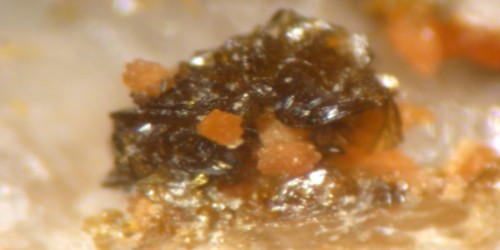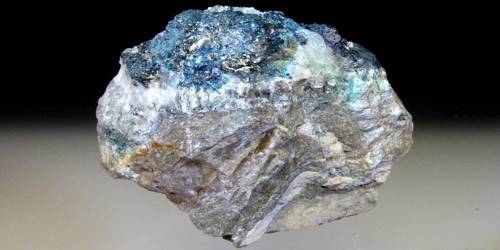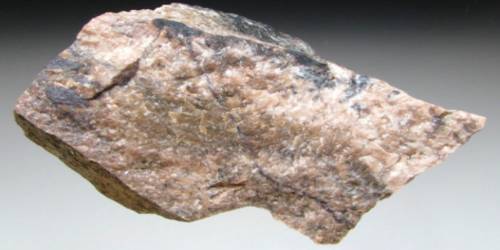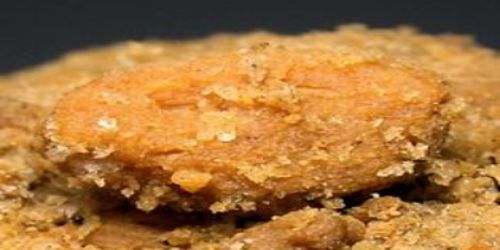Greifensteinite is beryllium phosphate mineral with formula: Ca2Fe25+Be4(PO4)6(OH)4·6H2O. It is a monoclinic-prismatic dark olive green mineral containing aluminum, beryllium, calcium, hydrogen, iron, magnesium, manganese, oxygen, and phosphorus. It is the Fe2+ dominant member of the roscherite group. It crystallizes in the monoclinic crystal system and typically forms prismatic dark olive green crystals.
It was first described in Germany at Greifenstein Rocks, Ehrenfriedersdorf, and was named for the location.
General Information
- Category: Phosphate mineral (Roscherite group)
- Formula: Ca2Fe25+Be4(PO4)6(OH)46H2O
- Crystal system: Monoclinic
- Crystal class: Prismatic (2/m) (same H-M symbol)
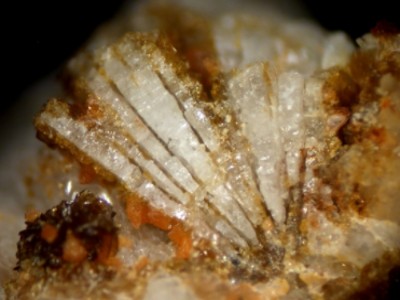
Fig: Greifensteinite – beryllium phosphate mineral
Properties
- Color: Yellow-green, olive green, light brown
- Crystal habit: Prismatic
- Fracture: Uneven
- Tenacity: brittle
- Mohs scale hardness: 4.5
- Luster: Vitreous
- Streak: White, greenish
- Diaphaneity: Transparent to translucent
- Specific gravity: 2.93
- Optical properties: Biaxial (-)
Occurrence: A rare secondary mineral in veins in mineralized granodiorite. At the type locality, it occurs within a lithium-rich pegmatite in miarolitic cavities. It was approved by the International Mineralogical Association in 2002.
Association: Schr¨ockingerite, baylissite, monohydrocalcite, calcite.
Information Source:
